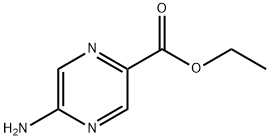This question arises in the context of understanding how sodium hydroxide (NaOH) behaves in different chemical reactions, particularly in its role as a base. Whether it is considered "small" or "bulky" relates to its molecular size and how it interacts with other molecules during reactions, such as in nucleophilic substitution.
Related Questions:
1.How does the size of a base affect its nucleophilicity?
2.How does NaOH compare to other bases like potassium hydroxide in terms of reactivity?
Is naoh a small or bulky base?
Related Products More >
-
- 108-80-5
- USD 50.0000
- 50kg
-
- 108-78-1
- USD 4.5000
- 25kg
-
- 4559-86-8
- USD 750.0000
- 170kg
-
- 77182-82-2
- equest For Quotation
-
- 70131-50-9
- equest For Quotation



 沪ICP备2021018848号-5
沪ICP备2021018848号-5

The size of the base is important when considering its reactivity in different reactions, particularly in nucleophilic substitution. A smaller base like NaOH is less sterically hindered and can easily attack electrophilic centers, making it more reactive in such reactions. This is why NaOH is favored in reactions where rapid nucleophilic substitution is required, such as in the SN2 mechanism.
Related Question 1: How does the size of a base affect its nucleophilicity?
The size of a base plays a crucial role in determining its nucleophilicity. A smaller base, like NaOH, tends to be a stronger nucleophile because it can more easily approach and attack an electrophilic center. Larger bases, on the other hand, may be sterically hindered, preventing them from effectively attacking electrophilic centers. This concept is crucial in understanding reaction mechanisms. For instance, in the case of nucleophilic substitution, smaller bases (such as OH⁻) are often better suited for SN2 reactions, while larger bases (like tert-butoxide, (CH₃)₃CO⁻) are more suited for SN1 reactions due to their ability to stabilize the intermediate carbocation.
Related Question 2: How does NaOH compare to other bases like potassium hydroxide in terms of reactivity?
NaOH and potassium hydroxide (KOH) are both strong bases that dissociate completely in water, so they have similar reactivity in terms of their ability to deprotonate substances or react in acid-base reactions. However, KOH has a larger potassium ion (K⁺) compared to the sodium ion (Na⁺) in NaOH. This difference does not significantly affect the basicity of the hydroxide ion (OH⁻), but the size of the cation can influence the solubility and the reactivity in certain reactions. For example, KOH can be more soluble in alcohols, which may make it more effective in some reactions compared to NaOH.
Considerations in Use or Application:
When choosing between NaOH and other bases, it's essential to consider factors like solubility, the type of reaction (e.g., nucleophilic substitution or elimination), and steric hindrance. For reactions requiring a small, strong base for nucleophilic attack, NaOH is often preferred. However, in reactions where solubility or the size of the base matters more, potassium hydroxide might be a better option.
It is also worth noting that both NaOH and KOH can be corrosive and must be handled with care, especially in concentrated forms. In practical applications, their concentration and the medium in which they are dissolved (water, alcohol, etc.) can significantly affect the outcome of reactions.
By understanding the size and reactivity of bases like NaOH, chemists can optimize reaction conditions for various synthetic processes.
In organic chemistry, the size of a base is often determined by the steric hindrance it presents. NaOH consists of a sodium cation (Na⁺) and a hydroxide anion (OH⁻). The hydroxide ion is relatively small and has a simple structure without any large substituents or complex groups attached to it. It can easily approach and react with acidic protons in a variety of chemical reactions. In contrast, bulky bases have large groups or substituents that can cause steric effects, hindering their approach to the reaction site. Since NaOH does not have such large and obstructive groups, it is classified as a small base. This property allows NaOH to participate in many reactions where it can readily abstract protons or act as a nucleophile without significant steric interference.